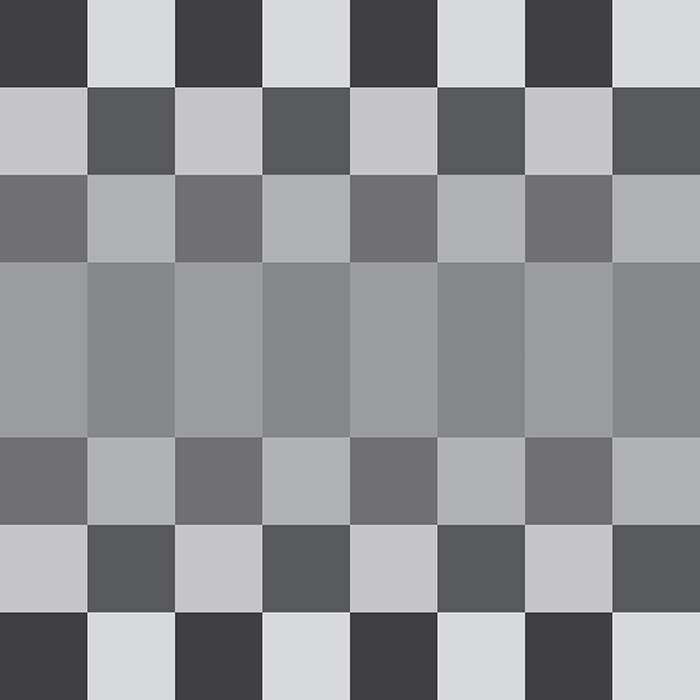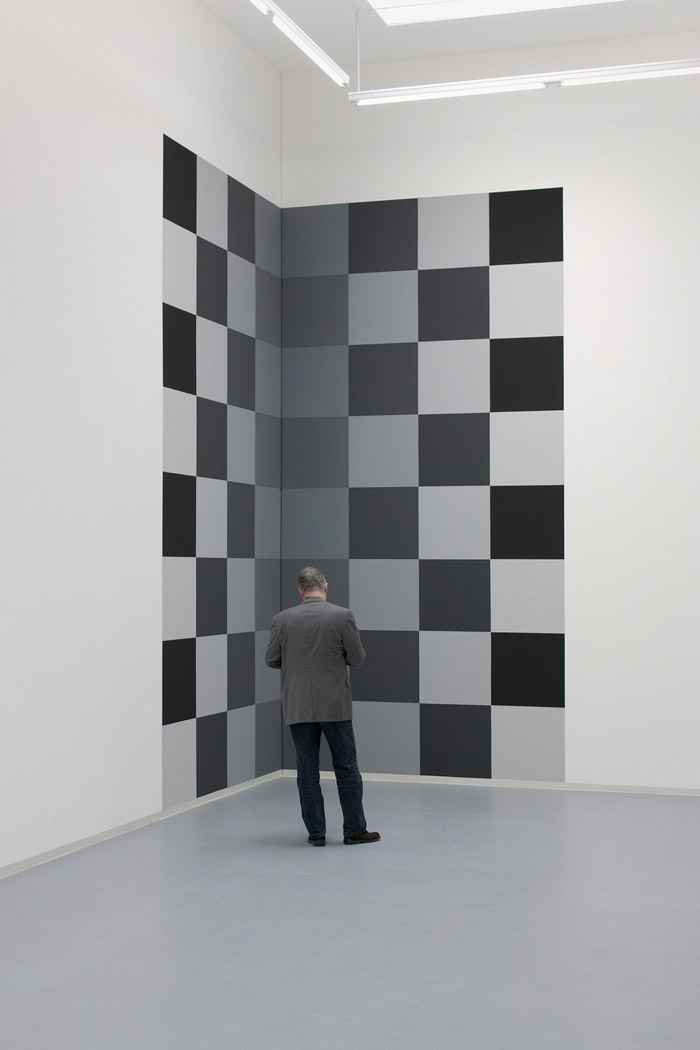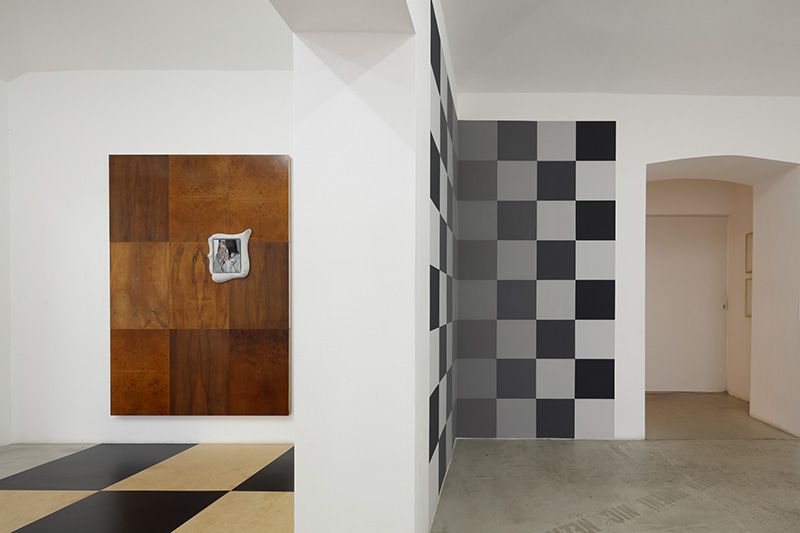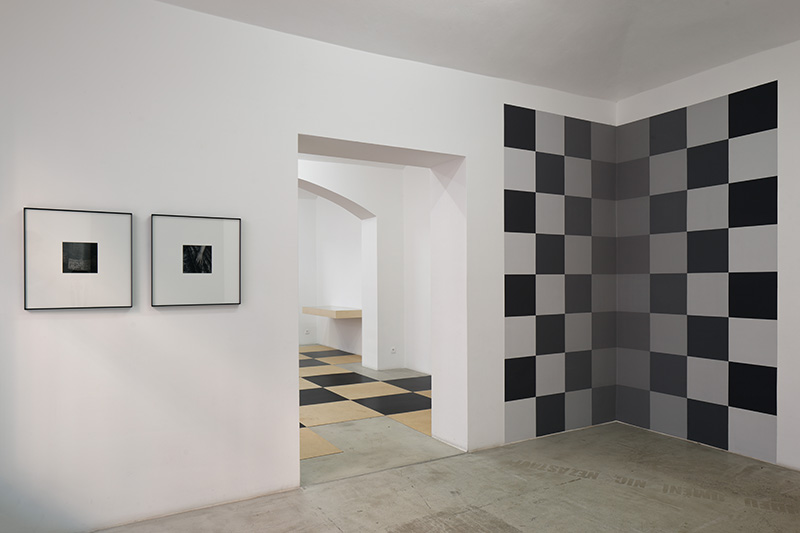A traditional chessboard design painted on the wall has two perfectly symmetric sides. The color of the squares on one side gradually change into the colors of the squares used by the opponent on the other side of the board, making the game unplayable. The impossibility of trying to play a game through to the end where the two sides of the board are not strictly divided would bring the players to point where they could go no further and eventually have to capitulate to the other. The work is situated in a corner, where the corner of the wall becomes the axis of symmetry between the two sides of the board, allowing each side to be an exact replica of the other.

Rorschach, 2010, variable dimensions

Rorschach, 2010, wall painting, 600 x 300 x 300 cm, On Altruism, Bonner Kunstverein, Bonn

Rorschach, 2010, wall painting, 600 x 300 x 300 cm, On Altruism, Bonner Kunstverein, Bonn

Rorschach, 2019, wall painting, 300 x 150 x 150 cm, Quodlibet, hunt kastner, Prague; photo: Ondřej Polák

Rorschach, 2019, wall painting, 300 x 150 x 150 cm, Quodlibet, hunt kastner, Prague; photo: Ondřej Polák